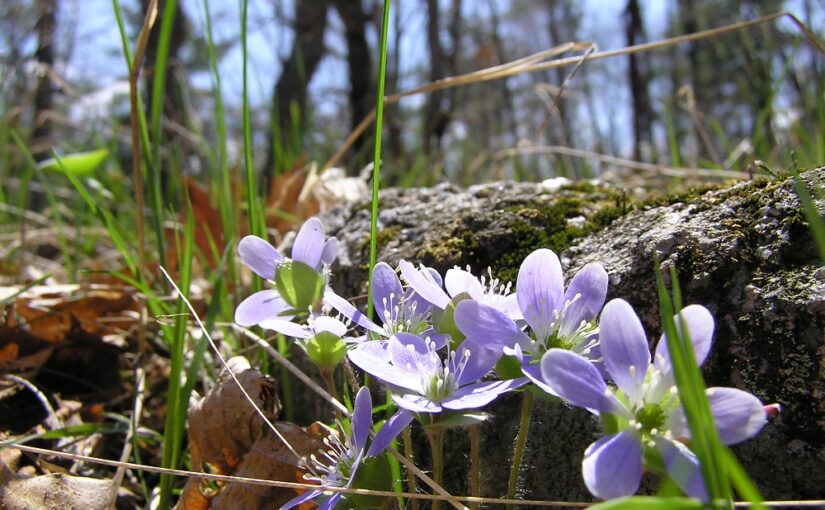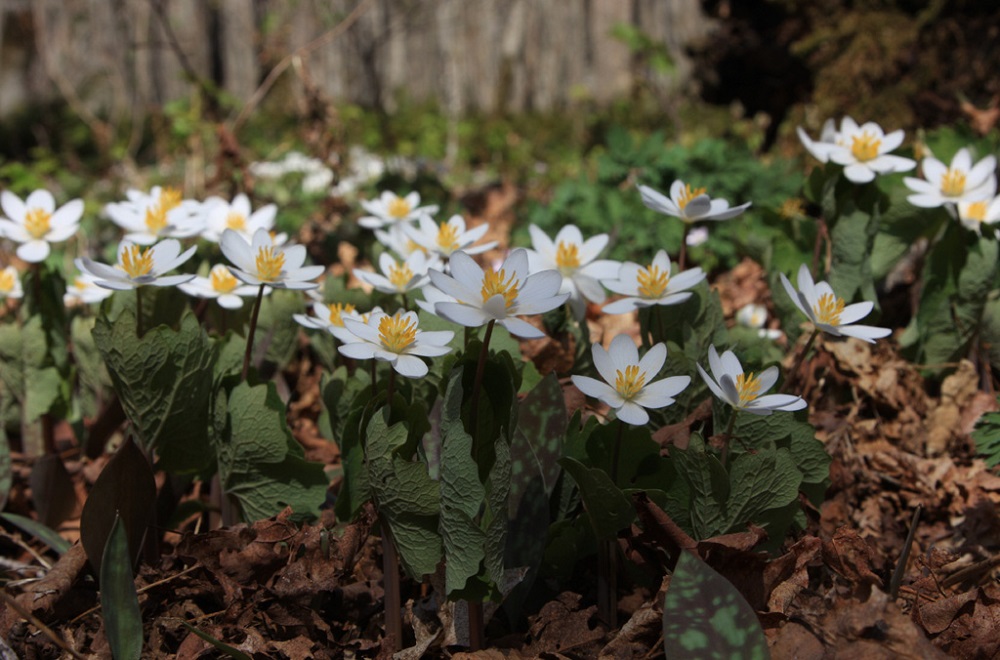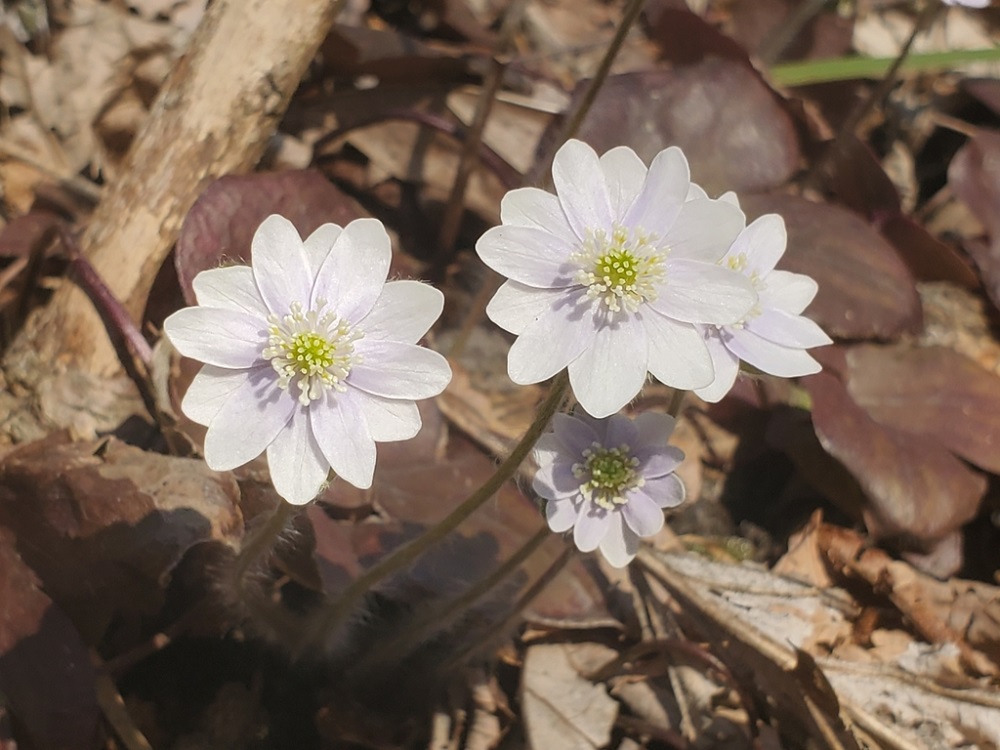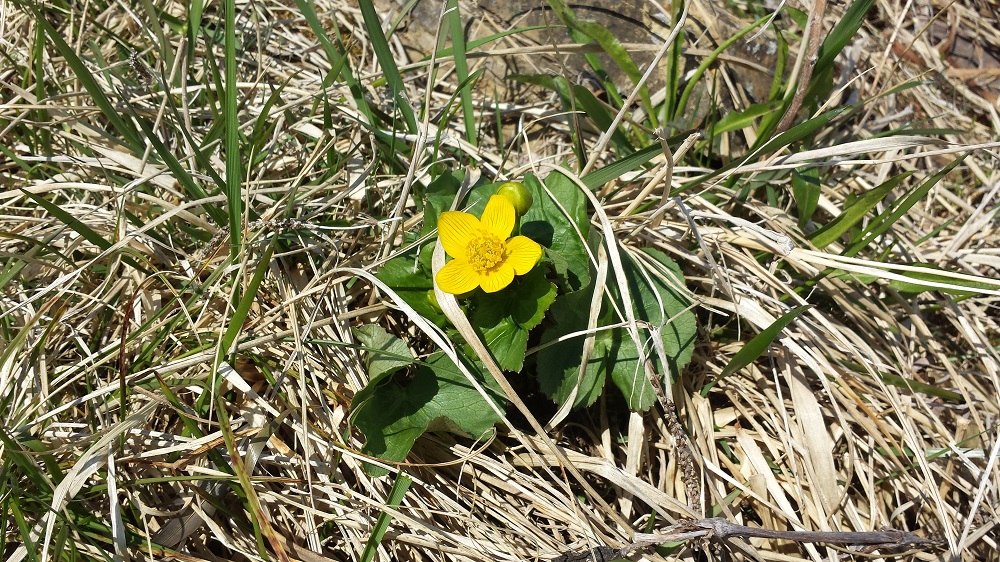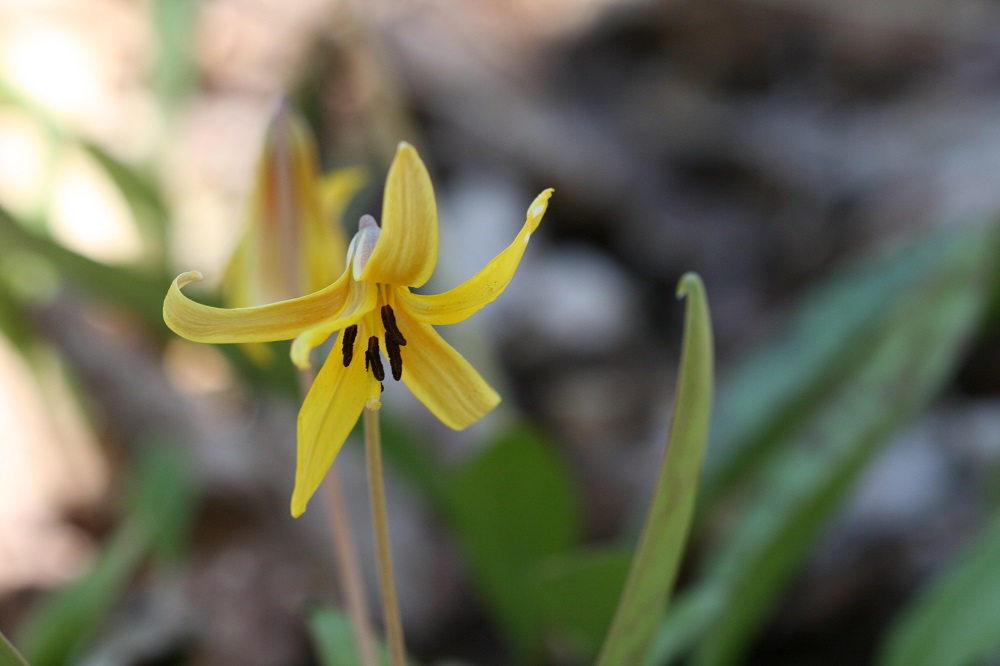The sun is shining, birds are chirping, and splashes of beautiful colour are beginning to pop up in parks.
Spring wildflowers bloom for only a short amount of time, and we’ve got our sights set on spotting as many as we can!
Here are five beautiful ephemerals you may find on your spring adventures:
1. Bloodroot
Though quite low to the ground, these early upturned flowers are sure to catch your eye on the edge of many Ontario trails.
A member of the poppy family, bloodroot is named for their deep red rhizomes, stems that run underground, with bright orange sap. Touching the plant can cause skin irritation, so it’s best to appreciate this flower from afar.
You can expect bloodroot to bloom in mid-April, however with a mild spring, they may pop up even sooner! It’s best to get out to view them quickly, as their white flowers may only last 10-12 days.
2. Hepatica
You may have already seen these wildflowers peeking through piles of leaves in your nearest greenspace! Hepatica, commonly known as liverleaf, are one of the first wildflowers to bloom in the spring.
Hepatica vary in colour, from pink to white to blue to purple.
Two species are found in central to southern Ontario: the Round-lobed Hepatica and the Sharp-lobed Hepatica. Both are nearly indistinguishable without their leaves.
Plainly: the Round-lobed Hepatica has round leaves, and the Sharp-lobed Hepatica has sharply pointed leaves.
3. Marsh Marigold
Hiking on a boardwalk through a marshy area or near the water’s edge?
You’re bound to come across a patch of these shiny yellow blooms. Marsh Marigolds are found throughout the province, namely wherever there’s plenty of water and sun.
Though they begin blooming a little later than the other spring ephemerals on this list, Marsh Marigolds can be found flowering as late as September.
Did you know marsh marigolds are related to the marigolds you may plant in your garden? They’re actually in the buttercup family, but Marsh Marigold plants can grow larger than their smaller cousins.
4. Trillium
Arguably the most identifiable wildflower on this list (it is the provincial flower, after all), trilliums are often found in the understory of forests.
Though you may be most familiar with the White Trillium, there are actually five native trillium species found in Ontario: White Trillium, Red Trillium, Painted Trillium, Drooping Trillium, and Nodding Trillium.
Northern Ontarians may want to plan a trip to a southern park to witness their beauty; White Trilliums are only found in the southern part of the province.
Want to learn more fun facts about trilliums? Check out this blog dedicated to our provincial flower!
5. Trout lily
You can’t miss these show-stopping beauties as they spring up across Ontario!
Similar to the trillium, Yellow Trout Lilies can most often be found in the understory of a deciduous forest.
The yellow flower of the trout lily will open up in the morning and close at night. If you go flower-spotting on an especially bright, sunny day, you may find its petals curved all the way back towards the stem!
If you find a spot with numerous trout lilies, you may spot the slightly rarer White Trout Lily, which is a visually similar species, save for its white petals.
Look, don’t touch!
If you spot a blooming beauty, feel free to take a photo or sketch the flower, but please do not pick it. Ontario’s wildflowers are integral to maintaining our ecological integrity, and picking flowers in provincial parks is against the law.
Remember: take only pictures, leave only footprints.
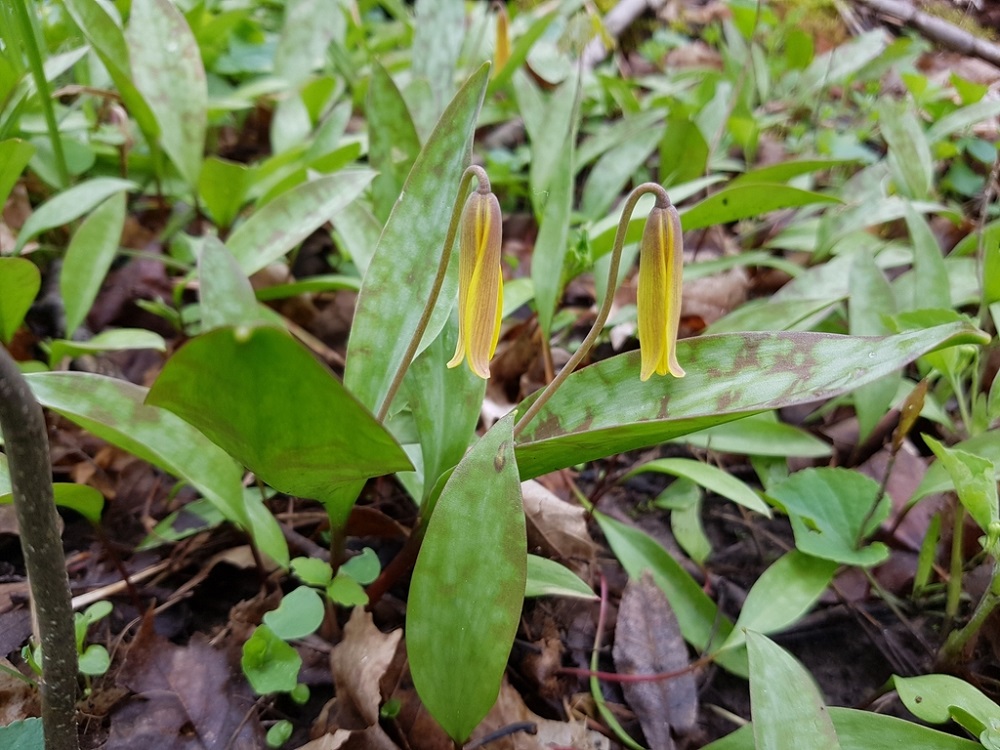
Having trouble identifying a wildflower (or any other mysterious living thing) in parks?
Snap a picture and tweet it to us using #AskAnOPNaturalist, and our naturalists will help you identify it!
